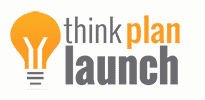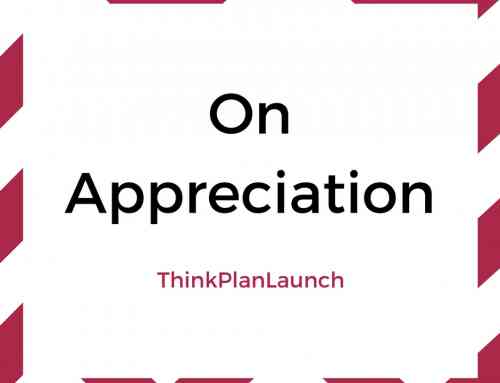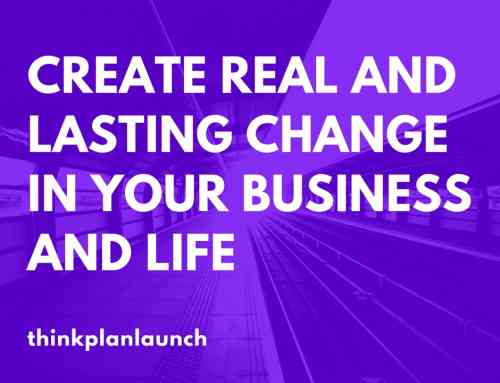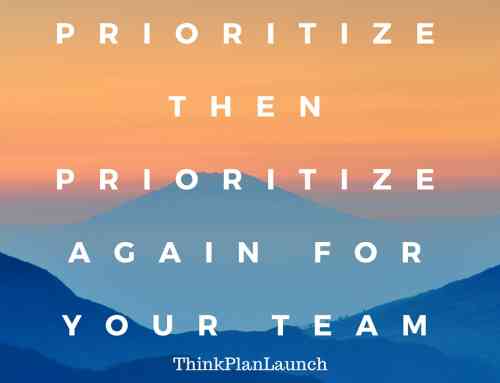In this article, we will examine the importance of engineering your hiring process – and how to do it.
Table of Contents
What is engineering, anyways?
In any business it is important to engineer things like products, services, and processes. But what do we really mean when we talk about “engineering” things?
Dictionary.com gives us the following definition of the word engineer when used as a verb: “to plan, construct, or manage; to arrange or carry through by skillful or artful contrivance.”
In a word, we might say to engineer something is to design it.
To engineer any process is to commit to its ongoing development.
Almost everything ever engineered can benefit from improvement, including hiring processes. But to reap the benefit, one must be committed to ongoing development and innovation.
Mark Zuckerberg didn’t build Facebook as we know it today by creating the first version and then quitting. He continued to innovate, design, and re-engineer his entire business – and he’s still going.
Likewise, Laszlo Bock (Google’s Director of Human Resources) didn’t achieve stellar results on human capital at Google by using outdated methods. He experimented, measured, and analyzed in order to create their current process – and then he wrote a book about it.
In his own words, “DON’T TRUST YOUR GUT: USE DATA TO PREDICT AND SHAPE THE FUTURE.”
We agree with Bock. Now let’s cut to the chase by looking at your hiring process.
What does your hiring process look like now?
To make progress towards any future goal, first one must understand the state of affairs today.
Why? Easy.
Having a clear understanding of today’s affairs allows for specific, actionable steps to be planned towards the end goal. This is true with personal and business goals.
Without a clear understanding of today’s affairs you are working in the dark. It becomes difficult or impossible to connect the present to the future. This lack of clarity is a main reason why so many plans, projects, and goals never come to fruition.
The desire is there, and perhaps even a clear vision of the future – but without an understanding of where Point A lies you can’t draw the map to Point B.
Start BIG.
To understand Point A, start by looking at the really big moving parts of your hiring process:
- How do you create your job descriptions?
- Where do your job applicants come from?
- What do you look for in resumes and cover letters?
- What is your candidate pre-screening process?
- How do you conduct and score interviews?
- Who has the authority to make hiring decisions?
- What criteria do you use to make hiring decisions?
We have found that some companies have relatively strict procedures and processes, while others (mostly smaller businesses) tend to “shoot from the hip” a little more. Their processes are a bit less defined and more open.
Regardless of your individual case, answer these questions to the best of your ability. Map it out on paper, too – this will give you a bird’s eye view of the entire process.
Then get small.
Once you’ve done this, get more granular:
1. How well do your job descriptions match the jobs they’re intended for?
Do you go to impressive efforts to create accurate and effective job benchmarks? Or are job descriptions more of an exercise in “copy and paste”? Do you frequently discuss job descriptions with people in your organization, keeping them updated as things change? Or have the same job descriptions been recycled for years, even as the organization and role requirements have shifted?
2. Are you doing your best to find the best applicants, from the right sources?
Some companies believe they’re doing fine, because a large volume of applicants already come to them. Maybe the company is popular and it receives many applications, for example. This can create the illusion that the company has its pick of the litter. But does it?
Volume is not quality, and oftentimes the best candidates are not the ones on the hunt. Proactive efforts should be made to find, approach, and network with high-quality future employees.
3. Do you use a proven method for evaluating candidates and their application materials?
More and more successful companies have gotten serious about candidate evaluation. They use proven job benchmarking methods and software driven by data to evaluate their talent pool. This increases efficiency, minimizes hiring errors, and eliminates personal bias in the decision-making process.
This is critical because your hiring process is your first line of defense. It’s the stage at which it’s least costly to deal with the bad apples – by not hiring them in the first place.
If you are still relying on HR employees to scan huge quantities of resumes and make snap judgments on who to interview, you’re missing out. There are now tools and systems available that are far less costly than this, and they evaluate applicants with a much higher degree of accuracy.
4. Do you have a validated pre-screening process?
When we use the word “validated” to describe a process, what does this mean? Well, it means the process has been shown to work with a high degree of confidence.
Most pre-screening techniques consist of short phone interviews. During such a call, the interviewer is expected to get a gut feeling of the interviewee’s abilities. Then they must judge whether or not the candidate will move farther into the selection process.
This can work sometimes, but nearly every employee who has ever left (voluntarily or involuntarily) once went through a typical pre-screening call. In turn, this causes us to distrust its effectiveness.
One common issue with all interviews – whether by phone or in person – is that the interviewee wants to put their best foot forward. Due to this, they may unintentionally (or intentionally) mislead the interviewer regarding their true abilities. If the discussion is centered around resume content, past work experience, etc., this is even more likely to be the case.
How do you get around this, and get to the bottom of what’s really going on? That is quite literally a million-dollar question!
It is valuable during pre-screening to center the discussion around behavioral and motivational factors. This continues into the interview.
How does this person interact with others? What are their peculiarities when at work? Why do they get out of bed every day – what is their passion, and what fuels them to excel in this job or field? Are they personally accountable, and can they prove that they are?
We so often hire for skills yet fire for behavior. To minimize this from happening in the future, you can take into consideration a candidate’s behavior early during the hiring process.
5. Are your interviews standardized for scoring and comparison, or mostly based on gut feelings?
We have observed a wide range of interviewing techniques and processes. Some are short and non-standardized, while others are very well thought-out and purposeful.
For example, I once worked with someone who would download a list of interview questions from the latest blog a few minutes before interview time. The questions themselves were alright questions, even. But did this person know the purpose of the questions or why they were written? Did they fit for the position this person was hiring for? Not exactly.
It is important to ask the right questions, and it can be helpful to standardize the process for comparison’s sake. This is especially true when multiple people are conducting interviews for the same position. If there is no common basis for measuring and comparing candidates, the information gained in interviews can be lost in translation.
Find out what questions you are asking now – and why. This will help you understand how interviews currently work, and how they might be made more effective.
6. Are the people making hiring decisions experts in hiring, or experts in their field?
This is an interesting question to think about.
Don’t we want managers who are experts in their field making hiring decisions? (In other words, attorneys hiring attorneys, engineers hiring engineers, and so on…) Yes, absolutely. It is critical to make sure a candidate has the technical skills required for the job. These are skills that an HR generalist may not know how to probe for, or understand completely.
There is another side to this coin though. Remember: we often hire for skills but fire for behavior.
If your goal is to minimize hiring errors, maximize performance, and increase retention, the natural next step is simple. Begin looking at the behavioral factors of your talent pool.
It is most powerful to evaluate all relevant workplace performance factors (behaviors, motivators, work competencies, acumen, emotional intelligence) alongside skills when making hiring decisions. These are factors which are not easy to read or probe for during traditional interviews.
Luckily, accurate candidate profiles can be created through the use of strategic assessments. In combination with the knowledge of skilled managers and employees, these assessments give you a complete understanding of the person you’re hiring.
Not only does this make it easier to hire the right people, but also to onboard them, communicate effectively with them, and lead/manage them. As an added benefit, it gives key insight into individual strengths and weaknesses that can be coached and developed over time.
7. How well is your hiring process working today?
Asking this question may seem redundant. But let’s take a step back and look at the big picture. To adequately engineer your hiring process, we need some baseline standards to compare it against.
Turnover across all industries averages 15% annually. How does your compare? To put this in context, an average company with 100 employees hires about 15 times per year due to turnover.
Now let’s examine the cost of turnover. The American Management Association (AMA) estimates the cost of employee turnover equals 1.4X their annual salary. Many HR experts and consultants believe the cost of turnover is even higher, as high as 3-10X salary. Do you know your cost of turnover?
Let’s use the more conservative estimate by the AMA of 1.4X for this example. If the average exiting employee’s salary is $38,000, then this cost equals $53,200. And at the company with 100 employees and average turnover rates, this costs them $798,000 per year.
In your case the numbers will probably be different – maybe higher, maybe lower.
At larger companies this number climbs into the millions of dollars per year rather quickly. And even at smaller companies, such as startups, it is exceedingly critical to hire the right people. When only a few people make up the entire team, one person can easily make or break the bottom line.
Now, analyze the data to understand your strengths and weaknesses.
In the last section, we spent considerable time looking at the details of your hiring process. We examined the big moving parts, and then we broke them down into their smaller components. Finally, we looked at some baseline metrics for purposes of comparison.
The next step in engineering a great hiring process involves analyzing the data. You need to digest the information and in doing so, identify gaps, weak areas, and bottlenecks.
Maybe your front-line recruiting efforts are working well, consistently putting you in touch with top talent for consideration, but your interview process sucks. Or maybe you’re already doing a great job with interviews, but you’re still struggling with turnover because you lack an effective candidate evaluation system.
Every case will be a little different, and almost everybody will have a different opinion. The important thing is that you commit to discovering the truth of the matter; you must get to the essence of what’s working and what’s not. Only then does it become possible to create road maps for positive organizational change.
Finally, engineer your hiring process for success.
Let’s say you have identified that your main problem is front-end recruiting. You don’t have very many applicants, and you’re struggling to get noticed by them. In other words, it’s slim pickings! Well, just as a sales department must use a strategy for getting in front of potential clients, recruiters must employ strategies to widen their reach.
In such a situation, using talent assessments can still be very beneficial, but your primary concern would be increasing applicant volume.
It would also be helpful to examine why the applicant volume is so low in such a case – is the salary and benefits package not attractive, or competitive enough? Is the company’s reputation suffering for some reason? Is unemployment decreasing and with it, is there a shrinking talent pool? Heck, maybe you’re just not putting much active effort into recruiting! There are endless possibilities, and here again it’s important to understand the “why” so the issue can be addressed.
On the other hand, what if you have plenty of applicants but you’re struggling to hire the right ones? In this case, using a patented job benchmarking process that leverages talent assessments is your ace in the hole. Hey, life gets a lot easier when your hiring confidence goes from 50% to over 90%.
While each individual case is different, you can almost always find one or two areas to optimize significantly. This optimization may have a cost attached in the form of time, money, and/or effort, but if it is lower than existing costs due to turnover, then it is a winning game to play.




Leave A Comment